Our blood sugar impacts our bodies in a number of ways. You’ve probably heard me talk about how sugar is one of the worst words for skin and how elevated blood sugar can trigger a number of skin problems such as acne, eczema and premature aging. Today I’ve asked my friend and colleague Dr. Michael Murray to come on as a guest and talk about blood sugar.
Dr. Murray is one of the world’s leading authorities on natural medicine. He is a graduate, former faculty member, and serves on the Board of Regents of Bastyr University in Seattle, Washington. Dr. Murray has written over 30 books featuring natural approaches to health including the definitive textbook on naturopathic medicine.
According to Dr. Murray, “One of the great myths about natural medicines is that they are not scientific. The fact of the matter is that for most common illnesses there is greater support in the medical literature for a natural approach than there is for drugs or surgery.”
Dr. Murray has dedicated his life to educating physicians, patients, and the general public on the tremendous healing power of nature. In addition to his books, which have cumulative sales of over six million copies, Dr. Murray has written thousands of articles, appeared on hundreds of radio and TV programs, and lectured to hundreds of thousands of people worldwide.
It is my true pleasure to interview Dr. Murray today on the importance of balancing blood sugar, the root causes of diabetes and ways to naturally balance blood sugar and even reverse diabetes.
So, please enjoy this interview with Dr. Michael Murray…
I hope you enjoyed this interview today with Dr. Michael Murray.
To learn more about Dr. Murray and take his diabetes quiz, go here.
To take Dr. Murray’s Blood Sugar Quiz, CLICK HERE.
And, I hope you’ll join the The Spa Dr. community here or subscribe to the podcast on iTunes so you don’t miss our upcoming shows.
If you have not done so already, I highly recommend that you get your customized skin profile here. It’s free – Based upon your answers, it will give you great tips for glowing skin and vibrant health. In just a few minutes you will have your own customized skin report!
Also don’t miss out on all of the latest tips to get glowing healthy skin from the inside and out, be sure to follow me on Facebook, Pinterest and Twitter. And join the conversation!
Thank you, and we’ll see you next time!
Transcription
| Trevor: | Hi. I’m Dr. Trevor Cates. Welcome to The Spa Dr. podcast. Our blood sugar impacts our bodies in a number of ways. You’ve probably heard me talk about how sugar is one of the worst foods you can eat for skin and how elevated blood sugar can trigger a number of skin problems, from acne, eczema, to premature aging. |
| Today, I’ve asked my friend and colleague Dr. Michael Murray to come on as a guest and talk about blood sugar. Dr. Murray is one of the world’s leading authorities on natural medicine. He’s a graduate, former faculty member, and serves on the board of Bastyr University in Seattle, Washington. Dr. Murray has written over 30 books featuring natural approaches to health, including the definitive textbook on naturopathic medicine. | |
| According to Dr. Murray, one of the great myths about natural medicines is that they are not scientific. The fact of the matter is that for most common illnesses, there is greater support in the medical literature for a natural approach than there is for drugs or surgery. Dr. Murray has dedicated his life to educating physicians, patients, and the general public on the tremendous healing power of nature. In addition to his books, which have [inaudible 00:01:15] sales of over 6 million copies, Dr. Murray has written thousands of articles, appeared on hundreds of radio and TV programs, and lectured to hundreds of thousands of people worldwide. | |
| It is my true pleasure to interview Dr. Murray today on the importance of balancing blood sugar, the root causes of diabetes, and ways to naturally balance blood sugar and even reverse diabetes. Please enjoy this interview with Dr. Michael Murray. Mike, it’s so great to have you on my show. | |
| Michael: | Oh, it’s my pleasure. I’m excited. |
| Trevor: | Yeah. It’s good to have you here. Today, we’re talking about blood sugar and diabetes. Let’s talk about blood sugar and why it’s important. |
| Michael: | Yeah. Blood sugar is a key factor in our physiology, the way our body works. When blood sugar levels get too high, it basically leads to a snowball effect that leads to physiological chaos. What that basically means is your body starts malfunctioning. It doesn’t function the way it’s designed, so we have to do everything we can to keep our blood sugar levels within a narrow range. |
| Trevor: | Yeah. What are some of the things that happen if our blood sugar goes too high? |
| Michael: | One of the things that happens is that that glucose molecule can oxidize, which means that it can cause damage to surrounding tissues. That’s something that we want to prevent. People have heard about the importance of antioxidants, and when we have high blood sugar levels, boy, that’s a lot of oxidative damage, and we can only get partial protection from dietary antioxidants. Another thing that happens when blood sugar levels get too high is that glucose molecule can start attaching itself to proteins, and one of the reason why our body starts going into physiological chaos with elevations in blood sugar is that our system is all based upon feedback mechanisms, kind of like a thermostat. |
| For example, cholesterol levels. Cholesterol is primarily made by our liver, so when our cholesterol levels get to a certain point, there’s a feedback mechanism that tells the liver cell, “Stop making LDL cholesterol. We got plenty of cholesterol. Shut it down.” When we have high blood sugar levels, that glucose molecule can act like Super Glue and prevent that LDL molecule from binding to a receptor site and tell that liver cell to stop making cholesterol. | |
| That liver cell without that feedback thinks, “Oh, my gosh, I’m not getting any feedback. I must not be making enough LDL cholesterol, so I’d better get on the stick and make more.” That’s just one example. Our whole system, whether it’s neurotransmitters, compounds in our brain, whether it’s inflammatory compounds, whatever, they are severely disrupted if we have elevations in blood sugar. | |
| Trevor: | Yeah, absolutely. I talk a lot about skin and I talk about how people, if they get too much sugar, their blood sugar goes up and can impact the skin. Can you explain a little bit about that as well? |
| Michael: | Yeah. A lot of these kind of axioms of naturopathic medicine when it comes to skin health, such as it all starts in the gut, health starts in the gut, and our diet plays a huge role in our skin health as well. Acne, for example, has been referred to as diabetes of the skin. What they’ve done is they’ve actually done glucose tolerance tests and measured the level of glucose in the skin. What they found is that people that have acne, they respond to sugar in a way that leads to the development of the lesions that we associate with acne. |
| In addition, the sugar leads to production of a factor called insulin-like growth factor, and that’s another real bugaboo in terms of our skin health. In the case of acne, severe exacerbation. Two foods that really are important to stay away from for people with acne are (1) anything that has a high level of sugar, anything that’s going to disrupt our blood sugar control and (2) milk. It’s not so much because of the nutritional content in milk, which we could talk about why that wouldn’t be good for the skin, but milk has a tendency to raise insulin-like growth factor. They have shown now in good scientific studies that … This is done in adolescents with acne. Getting them off the high sugar foods, getting them off milk, has a dramatic effect on their skin health. That’s just one condition. | |
| If we talk about aging, if you want to age your skin fast, drink a lot of sugary beverages, eat a lot of high-sugar foods, because one of the factors that lead to excessive aging is that oxidative damage as well as that glycation, the attachment of the sugar molecule to protein. I’m sure all your listeners and viewers know that your skin is largely composed of a scaffolding of protein, so when that becomes glycosylated or glycated, it just leads to acceleration of all the degeneration, wrinkle formation, aging, photo spots, whatever, that we associate with aging skin. | |
| Trevor: | Absolutely. Okay. Let’s talk about when blood sugar, elevated blood sugar becomes prediabetes and diabetes. When does that transition happen? There are those of us that want to just be careful about not eating sugar. Then at some point people can develop prediabetes or diabetes. Can you talk about that? |
| Michael: | Yeah. These are labels. Most often, they’re determined by your fasting blood sugar level. Ideally, your fasting blood sugar level should be 80 to 100. If it’s between 101 and 125, we refer to that as prediabetes, and if it’s over 126, then that usually indicates diabetes. Most often, we’re talking about Type 2 diabetes, which is not a lack of insulin. It’s a lack of insulin effect. People that develop Type 2 diabetes, they have plenty of insulin, especially in the early days. They just are not able to utilize that insulin correctly, while someone who has Type 1 diabetes, their pancreas is just not making any or sufficient amounts of insulin, so they need to be on insulin therapy. |
| Type 2 diabetics right now, I think most of them are on a downward spiral because they’re listening to conventional medicine instead of just innate wisdom. Diabetes, Type 2 diabetes owes its origin to diet and lifestyle. That’s where we should be focused on our treatment, not by utilizing drugs as biochemical band aids. The bottom line is that going down the drug path for someone with Type 2 diabetes long term is fool’s gold. There’s a better approach, and that’s the natural approach, which focuses on getting at the root cause of their blood sugar issue and addressing that root cause. | |
| Trevor: | Yeah, absolutely. Talk about why diabetes is so serious. Explain that. |
| Michael: | Oh, yeah. Diabetes, like I said, it leads to physiological chaos. We have acceleration of aging and acceleration of the damage to our cells. It worsens all of the age-related conditions, whether we’re talking about cancer, heart disease, diabetes. If you have elevations in blood sugar, you’re going to accelerate your development of all of those conditions. People don’t realize that this epidemic of Alzheimer’s disease, for example, is closely tied to that diabetes epidemic, which is closely tied to our obesity epidemic. |
| What happens when our blood sugar levels are uncontrolled, we get that excessive glycosylation and people can go blind. People can develop nerve damage, people can develop kidney damage. People can lose their feet and hands. Diabetes is a serious health condition. Again, it’s something that we can largely control though diet and lifestyle. Then if additional support is needed, there are some fantastic natural approaches that can bring those blood sugar levels down so that people don’t have to rely on the fool’s gold. They can get the real stuff and get on the path to good health. | |
| Trevor: | Let’s talk about how common diabetes is. |
| Michael: | Yeah. It’s just remarkable. I think we can talk about how it’s so close to obesity and we see a parallel rise in the rates of obesity and Type 2 diabetes. It’s pretty significant. It’s estimated now by 2020, which is now a little over 3 years, that about half of the adults in America will develop diabetes in their lifetime. It’s now become just a big problem, but here’s something to consider. When someone does not have diabetes, their average healthcare costs in a year are about $2500.00. If someone has diabetes, their average healthcare cost per year is about $12,000.00. Diabetes is crippling our healthcare system. We’re spending all this money on healthcare, and even though statistically it shouldn’t account for that big of a chunk of our healthcare dollars, because it’s such a chronic degenerative disease and people are getting such poor answers, we’re really bankrupting our society trying to treat diabetes with this drug approach. |
| Trevor: | Right. It’s so common. I’m sure the people watching, listening know someone with diabetes or maybe they have diabetes themselves. |
| Michael: | Yeah. |
| Trevor: | For people that are tuning in and wondering if they might have diabetes or prediabetes, what are the blood tests or what are the tests that people should find out, to find out if they have prediabetes or diabetes or if they’re heading in that direction? Is there anything? Do you want to just talk … Besides the blood sugar, because you talked about those levels, but other tests? |
| Michael: | Okay. First off, the best indicator of whether someone has insulin resistance, which can lead to Type 2 diabetes, is their waist to hip ratio. If their waist is larger than their hips, they are at a greater risk of having insulin resistance and developing prediabetes and diabetes. That’s a simple measurement. I mentioned the fasting blood sugar. That’s kind of just a basic screen. There’s gaining support for a measurement called A1C, and if people have diabetes out there, they know what this test represents. It represents the amount of glucose that’s attaching itself to red blood cells. Since red blood cells live about 90 days, when we measure the level of glucose that’s attached to red blood cells via this A1C test, we can get a good sense of what a person’s blood sugar level has been over a 90-day period. |
| This level of A1C is significant in regards to the risk for developing all the complications of diabetes. I think it’s an important test to add to your yearly physical. I’d also have a C-reactive protein test. This tells us the level of inflammation throughout the body, and people who have an elevation in C-reactive protein … I know your audience is elevated. They’ve probably heard of this test for marker for heart disease risk. People that have elevations in their C-reactive protein have a 20 times greater risk of developing Type 2 diabetes. Definitely would be important to measure your C-reactive protein levels at least once a year. | |
| Trevor: | Do you recommend people have the basic CRP or high sensitivity, the hs-CRP? |
| Michael: | Yeah. The hs-CRP is kind of the standard now, so that’s the one I think most labs are using. People should just make sure that it is highly sensitive. |
| Trevor: | Okay, great. Now let’s talk about Type 2 diabetes, and I think people that have been diagnosed with prediabetes, too, they fall under this as well. Then also another term that’s used is insulin resistance. You mentioned that. Let’s talk about how these can be reversed and how people can recover from these. |
| Michael: | Yeah. There are different causes of blood sugar issues. If people go to my website, doctormurray.com, or maybe have a link, they can take a blood sugar quiz to identify which of the 4 underlying root causes of blood sugar issues they may have. There are a number of things that are common. One of them, as I mentioned, having a larger waist-to-hip ratio. When we start gaining weight in our abdomen, collectively these fat cells start acting like a tumor, and a tumor wants to grow. |
| The way that that fat cell mass feeds itself is through sugar. It secretes compounds that block the action of insulin. The way insulin works is that it binds to a receptor site on our cells, and that opens up channels that allows glucose and other nutrients to enter that cell. When you block that insulin effect, that’s where you get the elevations in blood sugar most commonly. For most people, it’s a matter of losing weight. If they can lose weight, and particularly that visceral body fat, the abdominal fat, they can bring their blood sugar levels under control. | |
| Let me tell you some interesting research. They did a study where they looked at people that were obese. People that are obese have a high risk of developing Type 2 diabetes. They broke them down into groups of 25%, so the highest 25%, these folks were exposed to the highest level of what are called persistent organic pollutants. At the lowest level 25%, these people had the lowest level of exposure. | |
| They then looked at their rate of developing Type 2 diabetes. They found that the group that had the highest exposure to pesticides, herbicides, flame retardants, plastics, parabens, all these obesogens … I don’t know if you’d use that term with your group, but these are compounds that block the active insulin and lead to obesity as well. When they looked at the highest exposure compared to the lowest exposure, even though they had the same degree of obesity, there was a 32 times greater risk of developing diabetes in the high-exposure group than the low exposure. | |
| We can make a claim based upon that data that we not only have to lose the weight, but we have to figure out ways to get rid of all those stored toxins. | |
| Trevor: | Right, because many of these things just store up in the fat and then you have more fat cells, you’re going to hold onto these toxins more. |
| Michael: | Yeah, exactly. They’re given that name, persistent organic pollutant, because they’re very hard for our body to get rid of, and we’re at the top of the food chain. Interestingly, when they’ve looked at where do people get the highest levels of pesticides and herbicides in their diet, it’s not through vegetables or plant foods. It’s actually from foods that are higher up on the food chain, so mainly meat and dairy. Really important, probably more so, to focus on organic meat and dairy than organic vegetables. I think both are important. I’m not saying that they’re both not important, but if 90% of our toxin exposure is through intake of meat and dairy, we can significantly reduce that. |
| These are just some considerations. There are other factors that can lead to blood sugar issues, stress, excess cortisol. You know that cortisol is just … It’s so damaging to our skin. It leads to thinning of the skin. We really have to, some people, get their stress under control before we can get their blood sugar level under control, because what happens with excess cortisol is you get that dampening of insulin and you get a tremendous release of glucose into the blood stream. Stress is one of the other factors that we identify in that blood sugar quiz. We’re trying to help people determine what is going to be the best path for them to get their blood sugar levels under control. | |
| Trevor: | Okay, so losing weight, especially dropping fat is what you’re talking about. |
| Michael: | Yes. |
| Trevor: | Then addressing adrenal issues or excess cortisol is another. Are there other root causes- |
| Michael: | Yes. |
| Trevor: | … that your quiz kind of directs people to? |
| Michael: | Yes. There’s a really interesting enzyme within our cells. It’s called AMPK, and this is kind of the master enzyme that controls our degree of body fat, our response to insulin, whether we make too much cholesterol and triglycerides. This is a central target for most people, so I’ve identified people who have low AMPK activity based upon their diet and other indicators. Then we can flip that AMPK enzyme on, again, through diet, exercise, and dietary supplements. |
| Wherever someone falls, whatever bucket they fall into, we’re able to provide really good guidance to help them get their blood sugar levels where they should be. If they need to lose weight, the program helps them lose weight. It’s all about trying to address the underlying cause. You know it, this is what we preach to everybody, the best medicine is the one that takes care of the root cause. You’re just a great example of this. Putting something on the outside to cover up what’s going on in the inside is not the way to improve skin health. We have to utilize a comprehensive strategy of nourishment, both inside and out. | |
| Trevor: | Yeah, absolutely. I think it’s so important what you’re talking about, that we want to get to these root causes. As naturopathic physicians, we talk so much about that, and I love that you’re doing that with your quiz in a way to help people identify what that is, because I’m sure you have experience when somebody with diabetes says, “Well, natural medicine doesn’t work for my diabetes. It’s not reversing my diabetes.” |
| Michael: | Yes. |
| Trevor: | That’s because they haven’t figured out their root cause. |
| Michael: | That’s right. |
| Trevor: | They might be using a general approach that’s not specifically identifying their root cause.
|
| Michael: | Yeah, exactly. |
| Trevor: | We see that a lot with skin issues, too. People say, “Oh, well, natural medicine hasn’t helped, you know, with my skin issue,” but that’s because they haven’t identified what their root cause is and really honed in on the treatment in that direction. |
| Michael: | Absolutely. Very well said. The thing about Type 2 diabetes that I wish that everybody knew is that it’s a completely reversible condition. If you take care of the root cause, you can cure people of Type 2 diabetes. It’s that simple. That’s a true statement. Any doctor that would say differently is simply not informed. If you take away the stressors, if you take away the factors that reduce the action of insulin, if you focus on giving the body the tools it needs to be healthy, if you focus on enhancing the action of insulin, then you can reverse Type 2 diabetes. |
| Trevor: | Right. Now are there certain things that help all people with Type 2 diabetes despite what their root cause is? Wouldn’t you say that there are certain things that across the board really do help? You mentioned dietary things and stress management. Can you give some specific things for people? They can go to your quiz, they can find out their root cause, and you provide some guidance with that, but for people in general, what are some general recommendations that you have for people? |
| Michael: | I’m a big fan of the glycemic load. I’m sure your viewers have heard about the glycemic index. The glycemic index tells us what 100 grams of sugar from a variety of different sources has on our blood sugar level. The glycemic load is a more real-life measure. It tells us the effect of the serving size of a particular food on our blood sugar level. I encourage anyone that wants to keep their weight under control, anyone that wants to lose weight, anyone that wants their blood sugar under control, anyone that wants to live a long, healthy and happy life, to have a working knowledge of the glycemic load. |
| My recommendation is to have no greater than an intake of 20 on the glycemic load for any 3-1/2, 4-hour period. To give people an idea of what that may mean, it could either mean a cup of brown rice or 2/3 of a cup of white rice. It could mean one banana. It could mean 4 cups of carrots. Different foods have different glycemic loads, and people can look at the serving size and see where that serving size plays on that glycemic load scale. It’s very simple, and there are apps for it. It’s not a complicated thing. You want to have a general idea so that you can control your portion of sugar and carbohydrates. That’s a benefit to everyone across the board, eating a low glycemic load diet. | |
| Trevor: | Okay. That gives them information about how to limit those foods with kind of the maximum of what you want to eat and those different foods. Okay. When I think of … A lot of times people are like, “Oh, carrots are really healthy. Why would I want to limit my intake of carrots or bananas?” but those are foods that tend to have a higher glycemic index compared to other fruits and vegetables. Correct? |
| Michael: | Correct. There are low glycemic fruit, and there are some fruits that are very high, and it’s okay. They’re all good foods. A potato is a good food as long as you keep it in that range of less than 20. A medium potato only has a glycemic load, I think, of around 13, so you could have a potato and then some other carbohydrate sources and be fine. It’s just that most Americans, they’re eating multiple sources of carbohydrates in a meal, and their glycemic load, the amount of carbohydrate and sugar that they’re consuming far exceeds their body’s ability to process it correctly. That’s where they get that steep rise in blood sugar, and that starts this domino effect. We want to stop the domino effect and then over time, we can help insulin work better just through diet alone. |
| Trevor: | Yeah, and if you think about what people are talking about a lot of times for a healthy diet. For example, for breakfast, cereal with banana and milk, and they may even put skim milk on their cereal and a glass of orange juice. That’s what people oftentimes think of as a healthy diet, but if you think about it, what we’re talking about is that’s a high glycemic index meal. It’s really going to spike your blood sugar. That’s what a lot of times, a lot of people in the United States think is a healthy breakfast, if they even get breakfast. |
| Michael: | I’ve got a friend who’s been struggling with his weight for years. He’s kind of like a sieve in what I tell him. I tell him and it just seems to just not go through, because we have the same conversations over and over again. He gets lost on what is a healthy meal. He has real sensitivity. I know him. He’s on a blood sugar roller coaster. When he has a high-sugar meal, his blood sugar levels go up and then they come crashing down, and when they come crashing down, that causes release of adrenalin and cortisol, so he gets a little amped up, little irritable, little grumpy, and he starts being really hungry and then he overeats. |
| I was with him yesterday, and I could see this … It was around lunchtime. I could see this kind of unfolding, and I said, “What did you have for breakfast?” He said, “I had a really healthy breakfast.” I said, “Tell me what you had.” He said, ” Well, I had oatmeal.” I said, “Great. Oatmeal is a good food if you had a moderate portion size. Did you put anything on that oatmeal?” He says, “Well, yeah, I put a little brown sugar.” I said, “Did you mix anything in there?” He goes, “Yeah, I put some raisins and I put a banana in it.” I said, “It’s way too much sugar.” | |
| I sent him information on the glycemic load. He just hasn’t taken that critical step in applying that information. If he would have added up the glycemic load for that meal, it would have been about 40, would have been about 40. It sets up failure. For him, it’s failure to control his appetite, and then he never loses any weight. For 5 years, he’s been trying to lose 15 pounds. He loses 5 pounds and he gains it all back. The key reason is he hasn’t controlled his blood sugar, and he can’t control his blood sugar as long as he keeps eating foods that are high in the glycemic load, even though many people would consider them healthy foods. | |
| Trevor: | Right. I’m also thinking about … As you’re talking about it, I’m also thinking about what people oftentimes feed their kids, thinking they’re sending their kids off to school with a healthy meal, having cereals or oatmeal with sugar and banana and fruit juice and those kinds of things. Then they go to school and they can’t focus, they can’t concentrate, and they get in trouble because they’re being hyperactive because of their food. Really is a big part of that. Then with kids, we’re seeing a high rate of diabetes in children now, too, Type 2 diabetes. |
| Michael: | Yeah, it’s sobering. It really is. The good news is that there are steps people can take to just be free. It’s liberating. They think about making change and they think about that they’ll be restricted. No. When you make the right change in your life, it’s freedom and they’ll enjoy greater control over their appetite, over their portion control, and they’ll be able to really achieve their goals and see a life that’s better, full of more energy, greater mental focus, and obviously a longer life, too. |
| I think there are so many beneficial things that come with improving blood sugar control. The downside of not doing it is that early death, lots of suffering. When you have diabetes, your suffering goes up dramatically because when your blood sugar levels are too high, it’s so devastating it causes exacerbation or worsening of all symptoms. People don’t sleep well, their mood is low, their energy levels are low, they don’t think clearly all the time. Then they’re bothered by aches and pains, digestive disturbances. Their skin isn’t as healthy. There’s just such a long list of things that they don’t want in their life, which I think are restricting. Why would you go down that path? Reverse it. Get on the path to a longer, healthier, happier life. | |
| Trevor: | Yeah, absolutely. We talked about foods that are thought of as healthy but that don’t really help with blood sugar. Can you give some examples of what you would consider a healthy breakfast? |
| Michael: | Okay. |
| Trevor: | Maybe even some other lunch and dinner options, too. Just so people have some ideas of what that means to make that change, because you were saying it’s not that hard to do. People think that they’re not going to be able to eat anything if they have to lose weight or to manage their blood sugar. |
| Michael: | Yeah. I’m a big fan of high protein smoothies. I tend to work out in the morning, so I don’t want a lot of heaviness in my stomach before I go work out. For me, what works is a good … I like whey protein. Other people like vegetarian protein, but whey protein has a very high biological activity and it’s been shown to help people feel satisfied and control their appetite, so I like whey protein. I’ll have a whey protein smoothie, and I’ll use .. I have it just about every day. I have probably about 30 different variations of flavors and base ingredients for the whey protein. I like a good high-quality smoothie. If people want to sweeten it up a little bit, then they should utilize frozen berries, preferably organic, because berries are one of the dirty dozen. We don’t want to be counterproductive and getting a lot of those pesticides and herbicides and whatnot. I like that. |
| I like Eggbeaters. I have half a cup of Eggbeaters. No, it’s a cup. I have a cup of Eggbeaters and one real organic egg, and then I find that to be a good breakfast. I think it’s really important to take advantage of spices. If I’m going to make myself scrambled eggs, I’m going to get a whole packet of basil and chop it up and throw it in there. Dill, I mix it up again. I like to take advantage of those really concentrated phytochemicals. For breakfast for me, it’s usually a protein smoothie or Eggbeaters with one real egg, and I put in a lot of spices or herbs to kind of punch up the medicinal effects. | |
| If I’m going to have oatmeal, it’s usually in the winter, late at night before I go to bed. I’ll take dried instant oatmeal and I’ll mix in PGX, which is a revolutionary fiber. It lowers the glycemic index. I’ll mix in Stevia and Xylitol to sweeten it up a little bit, and then I might put in 2 or 3 teaspoons of cinnamon. I do that in the winter because I find that it helps me sleep through the night. In the summer, I have an odd sleeping pattern. I tend to go to bed 9:30-10:00 and I wake up around 1:30 or 2:00, and I might be up for an hour and a half. Find it very productive answering e-mails and getting some work done. Then I go back to get my second sleep. This is how people used to sleep before the Industrial Age. In my transition in winter, I find that if I have that big bowl of oatmeal with the PGX and the cinnamon and the Stevia, it helps me break that cycle I was on and sleep through the night. | |
| Trevor: | Yeah, great. Okay. That will hopefully give people some ideas. Let me just ask you about your smoothies. What do you put in there? Coconut milk or do you put greens? |
| Michael: | Yeah. |
| Trevor: | Anything else in there? |
| Michael: | I’m not a real purist in that regard, but I’m always going to be honest with people. I’ll use the Whole Foods version of vitamin water or I’ll use just Vitamin Water Zero. They have it in different flavors, so then when you add vanilla to it, it tastes pretty darn good. The orange flavor Vitamin Water Zero or the Whole Foods version, if I mix in whey protein and I take advantage of PGX as well, and I mix that up, it tastes like a Creamsicle. It tastes fantastic. It’s interesting with the different flavors. With the strawberry, I find that goes really well with … I have some peanut butter whey protein and then just some dried nonfat peanut butter protein and some chocolate PGX SlimStyle. Oh, it’s just good. It’s just good. |
| Yeah, so I have lots of little tricks. I think the key is to mix it up. I rarely have 2 days in a row where I have the same breakfast. I think that gets a little boring. It makes it fun to try different things, and sometimes you discover things that taste really, really good. | |
| Trevor: | That’s great. You mentioned PGX. There are a few different supplements, nutrients, natural products you’ve helped bring to North America. That’s been one of them, right? You’ve been such a pioneer in the natural medicine world. I know that you got the Physician of the Year Award this past August from the National Association of Naturopathic Physicians. I know that you brought some natural products to North America, like PGX, and there are some other ones, too, right? |
| Michael: | Yeah. Virtually all the standardized herbal extracts, gingko, St. John’s wort, saw palmetto, specialty herbal compounds, curcumin, quercetin, DGL, enteric-coated peppermint oil, nutritional compounds like PGX but also glucosamine sulfate and natural GABA, PharmaGABA. Yeah, it’s been fun. I think the best from nature is yet to be uncovered. It’s so much fun, Trevor, to discover these things and then to see their impact. One of the things that is showing really great effects in blood sugar control right now is berberine, which is from … It’s a yellow pigment from goldenseal, goldthread, Oregon grape, and barberry root. |
| These plants have historically been used in treating what we would now label as Type 2 diabetes. They have shown in 27 double-blind placebo-controlled studies that the berberine will work as good as metformin in lowering blood sugar levels. It’ll work as well as a statin in lowering blood cholesterol levels, and it has a blood pressure lowering effect on par with the current drugs that are used. This is one natural compound that kind of hits that trilogy that we often see in people with blood sugar issues, high blood sugar levels, high cholesterol levels, and high blood pressure. That’s become a very popular recommendation by naturopathic physicians as well as available in health food stores now. | |
| Trevor: | What other natural products have you seen particularly helpful for Type 2 diabetes? |
| Michael: | I think PGX is one that I think everybody can really take advantage of. It’s a revolutionary dietary fiber. It’s available in powdered granule form. It’s available as part of meal replacement formulas, and it’s available in capsules. I’ve seen great results in helping people control their appetite, control their blood sugar levels, lose weight, be very effective in stabilizing their blood sugar levels in a narrow range. I like the PGX, 2-1/2 to 5 grams before meals, 3 times a day. The berberine I mentioned, typical dose is 500 milligrams 3 times a day. |
| Beyond that, there are just some basic things that everyone should be doing, but especially if they have blood sugar issues. One is to make sure they’re taking a high potency multiple vitamin and mineral formula, because so many vitamins and minerals we just don’t get enough of in our food. Although it’s popular to say you can get everything you need from diet, the reality is that we don’t even come close. High potency multiple provides some nutritional insurance. | |
| Studies have shown that people with diabetes are at higher risk for deficiencies of B vitamins and minerals like magnesium as well as trace minerals like zinc and chromium. A good multiple that provides the level of not just the vitamins, but also the minerals, recommended dietary intake levels I think is a really good foundation. Then there’s such a big pharmacy of natural compounds that help insulin work better. Many of these work by … I mentioned that enzyme AMPK. Many of these compounds, whether it’s green coffee bean extract or cinnamon or berberine or nutritional compounds like alpha-lipoic acid, PQQ and others, they work by activating that enzyme. | |
| These sorts of interviews are great. They’re designed just to pique people’s interest and hopefully get them to take the next step. In this case, go to my website, take the blood sugar quiz, and whatever they’re identified as falling into, they will be provided recommendations at no charge as to what I recommend. Then we try to kind of nudge people into really making a commitment to getting their blood sugar levels under control. I think we’ve established why that’s so important. | |
| Trevor: | Yeah, absolutely. I think it’s a great quiz. I’ve checked out the quiz, and I think question number 3 asks what kind of diabetes you have, so this is a quiz for people who know they have diabetes. If you’re watching this, listening to this, and you don’t know yet, you want to find that out first. Go see your doctor, get your blood records, get those tests done that you talked about today, Mike. Then people should go and take your quiz, or if people know anyone that has diabetes, certainly encourage them gently, I’m sure, to take the quiz and just get some information because you do provide some really great information to help people, and this is free information. It’s so much more than what we can talk about today. |
| Michael: | Yes. |
| Trevor: | I just think it’s so great, because not everybody can afford to see a naturopathic physician right away or they may not have somebody in their town but they want to get started, then I think this is a great way to get started. Then for people who really need it, they can find a naturopathic physician or a functional medicine doctor they might have to travel to see, but it’s certainly a good place to start. You also have a program, your diabetes reversal program. Right? |
| Michael: | Yeah. We developed a program to help guide people, and it’s really a robust program. It’s like they were coming to see me. It’s actually beyond what I would do for any single patient. It’s very extensive and we know that this program works to help people get rid of that ball and chain of diabetes once and for all. |
| Trevor: | Mm-hmm (affirmative). This is my last question for you. For people who have Type 1 diabetes, is there anything that you want to tell them specifically, because we’ve been talking a lot about Type 2 diabetes? |
| Michael: | Yeah. Nowadays, Type 1 diabetes, people should be able to live with that just as well, or perhaps even better than if they didn’t have it. Tight blood sugar control really does work with Type 1 diabetes. Utilize insulin, and then utilize nutrition to optimize your nutritional status. In Type 1 diabetes, the biggest reason for these complications is nutritional status. Low levels of various vitamins and minerals greatly increases the risk for all the complications of Type 1 diabetes. |
| I encourage them to, again, work with a naturopathic physician. They can get to my site and see my recommendations in my health condition section for Type 1 and Type 2 diabetes. I’ve also written a whole book on how to prevent and treat diabetes with natural medicine that focuses on diabetes. Then in the Encyclopedia of Natural Medicine, I have a chapter on Type 1 and Type 2 diabetes as well. There’s some recommendations there for more information. | |
| Yeah, we focus on Type 2 diabetes just because of the numbers. There are roughly 10 times as many people with Type 2 diabetes than Type 1 diabetes, and when we expand it to insulin resistance and prediabetes, you’re looking at 30 times the number of people with prediabetes and diabetes, the Type 2 diabetes compared to the Type 1 diabetes, so that’s why we focus on it so much. | |
| Trevor: | Yeah. I think that a lot of doctors, from what I hear is that people with Type 1 diabetes are oftentimes told that it doesn’t really matter what they eat or lifestyle isn’t … Because they have Type 1 diabetes and they have to use insulin, that that’s what they just should focus on. Of course, that is important, but I really do believe what you said that there’s so much more than you can do to support the body with those changes and those challenges that people have to help prevent complications. |
| Can people with Type 1 diabetes do your program and go through the program that you offer? | |
| Michael: | Yeah. We have special recommendations. What happens in Type 1 diabetes is they’re kind of funneled into a different response, so then we do provide answers for them, but these are all free of charge, so they should take the quiz, too. |
| Trevor: | All right, great. Mike, thank you so much for your information today. I truly appreciate all your wisdom today and the many years that I’ve been following you, reading your books and listening to you speak. Truly admire everything that you’re doing, everything you’ve done and continue to, so thank you. Thank you so much. |
| Michael: | I’m a big Spa Dr. fan, too, so keep up the good work, too. |
| Trevor: | All right. Thank you, Mike. |
| Michael: | All righty. |
| Trevor: | I hope you enjoyed this interview today with Dr. Michael Murray. To learn more about Dr. Murray, the quiz, and the program that he talked about, you can visit my website, thespadr.com. Go to the podcast page with his interview and you’ll find all the information and links there. While you’re there, I invite you to join the Spa Dr. Community on my website, or you can subscribe to the podcast on iTunes so you don’t miss any of our upcoming shows. If you haven’t done so already, I highly recommend that you get your own customized skin profile at theskinquiz.com. It’s free and based on the answers, just a few questions, you’ll get your own customized skin report. You can go to theskinquiz.com to access that. Also join me on social media, on Facebook, Pinterest, Twitter, and Instagram or even YouTube, and join the conversation. |
| Thank you, and I’ll see you next time on The Spa Dr. podcast. |
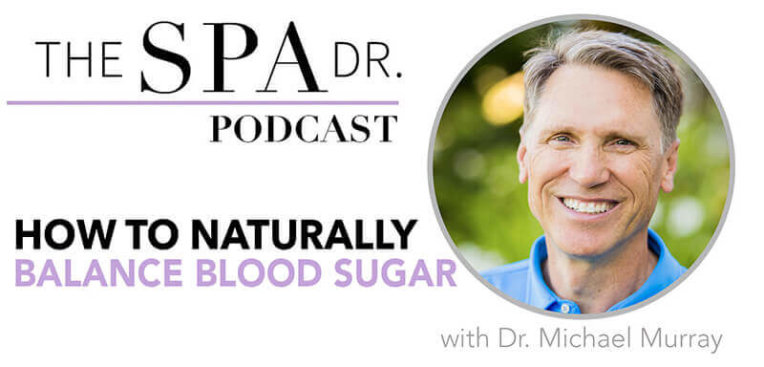
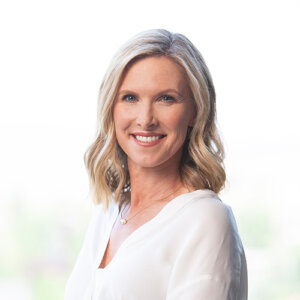
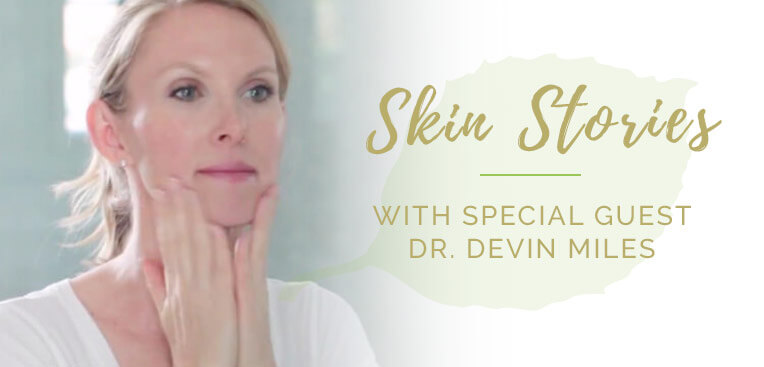
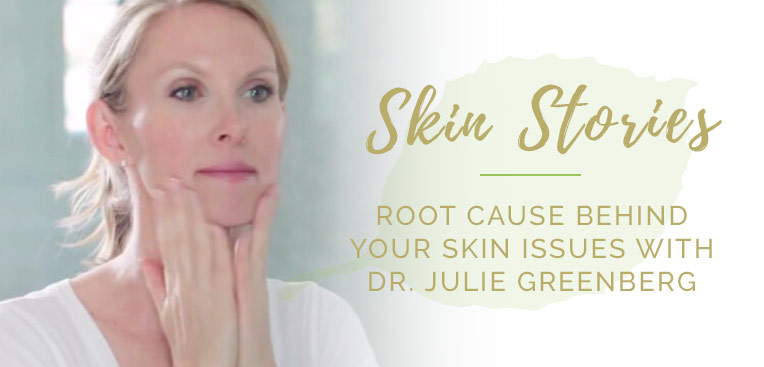

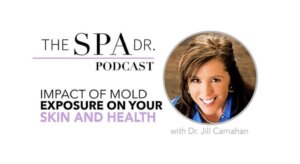
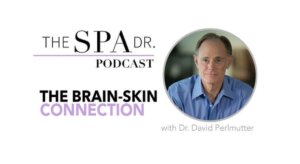
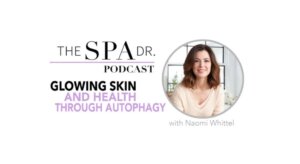
Reader Interactions